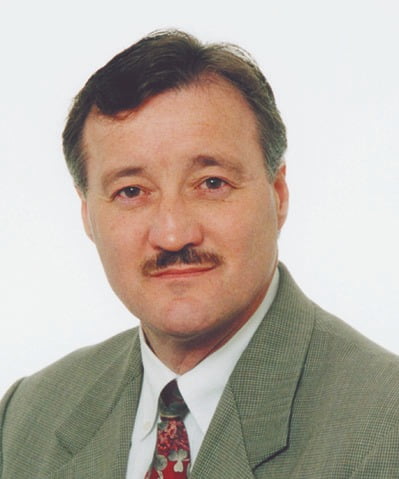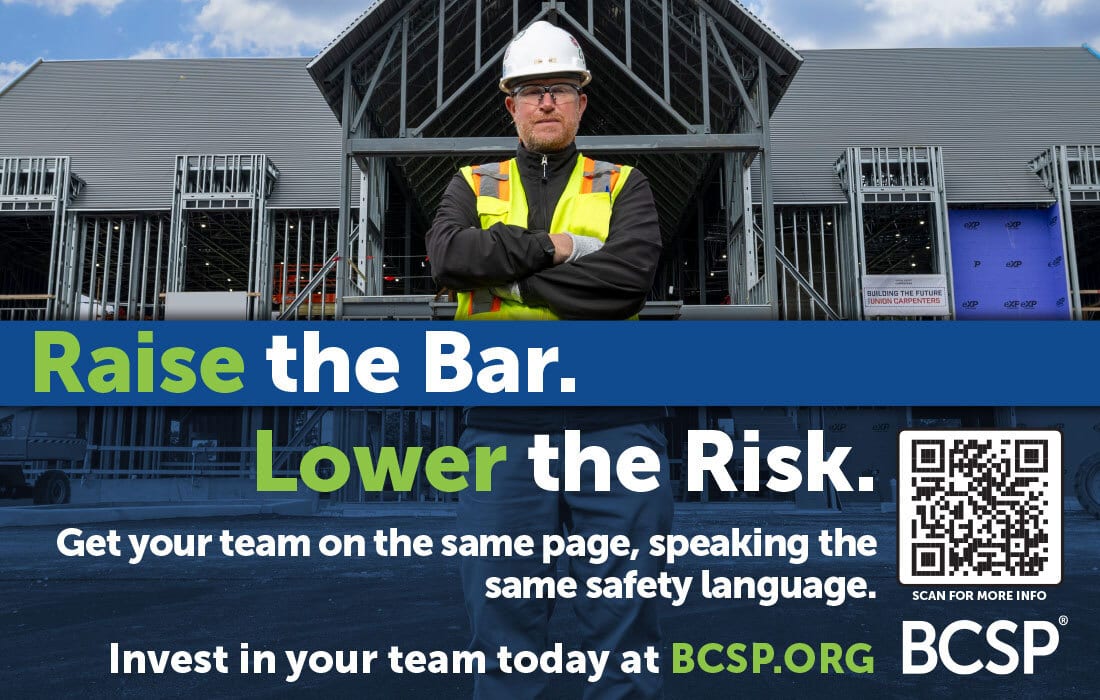By Dan Markiewicz
practices
MANAGING BEST
By Dan Markiewicz

How to Succeed in The Complex World of Conflict Mitigation
I
t’s time to toughen up buttercups. Trump 2.0 dismantling of traditional OHS as we knew it, is far from complete. I have a vivid imagination, but I could not, for example, have imagined NIOSH being crushed into its nearly non-existent form today. The casualty count among OHS pros, for what we believe is our calling, may not be fully known until the practice of OHS is “built back better,” perhaps years from now..
Foresee 4C
Lots of new things are being built. If you want to prepare for new things, use the Foresee 4C method. The method uses the belief of where a generally non-traditional OHS issue fits within the escalating categories of Curiosity, Concern, Controversy, and Conflict. That’s the 4C. The management objective should be to influence Controversy among stakeholders. The money objective is to prepare yourself to be a resource to mitigate stakeholder Conflict within that issue.
For example, long-time readers of this column know that I have been closely following the Curiosity and Concern of what’s now known as the federal Pregnant Workers Fairness Act (PWFA). When federal Controversy was at its peak, I injected my influence to get the industrial hygienist title into the PWFA final rules. We all benefit from that management action. I am now well prepared to mitigate stakeholder Conflict arising out of the PWFA. That’s my money objective.
Let’s test your 4C skills. On the 4C continuum, where would you place the menstrual health article I wrote last year? Now consider the following: This past April 2025, President Trump suggested using federal funds to advance menstrual education; ISO 45010 Menstruation, menstrual health and menopause in the workplace, will be out of draft review and open for final approval by September 2025; the EEOC commission, with a Republican majority by the summer of 2025, will rewrite the PWFA final rules with the objective to remove reasonable accommodations requirements for menstrual health, menopause, and similar health conditions that are not directly related to pregnancy or childbirth. Where is menstrual health now on the 4C continuum? You have an opportunity to influence management of this OHS issue now. As a money objective, you should prepare to mitigate menstrual health Conflicts that are now certain to arise in the near future.
Photo: valentinrussanov / iStock / Getty Images Plus
Conflict mitigation
LinkedIn “Skills on the Rise 2025” report notes that the top soft skill being sought by employers is “Conflict Mitigation.” Every OHS pro should enhance this skill to an expert level. If you are just beginning this journey, first read Crucial Conversations, Third Edition. There are plenty of other Conflict training resources, including certification programs, available online or in-person to build this skill.
Testing Conflict skills
Over the past two years, I have not been nice to elite OHS pros. I have particularly not been polite when engaged with AIHA members and pros that hold the CIH® or CSP® in group meetings. Alert readers of ISHN may have noticed this mean-streak, too, in some articles I wrote. You may recall in a recent article, that I presented a “100-day limit” for leading OHS organizations such as AIHA, to either take the lead or “I would do it.” In other articles, I used words that included “massive leadership failure” and “they are too stupid to know how to use the opportunity I gave them.”
AIHA members and other OHS pros used to have great Conflict mitigation skills but not anymore. In all these tests, the cowardly lions won’t even put up their paws. Non-response, or Conflict avoidance, in the venues I provided is not a good Conflict mitigation skill.
Psychological safety
The concept of psychological safety has been around since the 1950s. The term generally means to be safe from oppression in one’s surroundings. AIHA Membership and Volunteer Code of Conduct was approved in October 2017 and last amended in November 2024, with psychological safety likely in mind. Be aware that AIHA functioned, apparently well, without a Code of Conduct since its inception in 1939.
AIHA’s current Code of Conduct is substantial and scary. For example, any member that violates the code “will be subject to disciplinary action up to and including termination of membership or other relationship with AIHA.” “Abusive language or actions, including any form of harassment, peer pressure, intimidation, or bullying will not be tolerated.” “Disagreement is no excuse for poor behavior or poor manners.”
The choice of words within AIHA’s code are so subjective that any attempt to debate me in the public, or a back alley, could be interpreted to reveal a member’s poor behavior and poor manners — and the member could be kicked out of the AIHA club.
Misconceptions of psychological safety
The May-June 2025 issue of Harvard Business Review contains the article, “What People Get Wrong About Psychological Safety” by Amy C. Edmondson and Michaela J. Kerrissey. I strongly recommend that every OHS pro read the article in its entirety. For those that prefer the CliffsNotes version of the article, see Inc. Newsletters April 28, 2025, “Want to Be a Better Leader? Ditch These False Beliefs About Psychological Safety” by Marcel Schwantes.
Number one misconception: Psychological safety implies being nice. Both of the above sources say this is a “huge misconception.” Schwantes explains, “It’s not about being polite, avoiding conflict, or pleasing everyone on the team. It’s about being able to speak candidly, even when its uncomfortable. True psychological safety invites honest, respectful feedback — not just positive or ‘nice’ comments.” AIHA’s member code appears to embrace this misconception.
Not an AIHA novice
I was the founding 1984-1985 president of the NW Ohio section of AIHA. There were vigorous debates among all people with an interest in creating and advancing an AIHA section in NW Ohio. No one was afraid to speak freely — and trust me there were some wide and strong views on how to influence the future of IH in our region. My 2006 and 2007 AIHce 8-hour PDCs addressed the highly controversial topic of reproductive health. The “sold out” PDCs hotly debated whether an unborn child should have rights or should even be a topic of the course. How babies were made was frankly explained. Everyone, men and women, mixed nationalities, and other traits, that attended the PDCs gave input. I did not observe anyone sitting in silence. Students were not told to respect other views, they just did it. AIHA students self-managed times of Conflict, that’s why the PDCs were student ranked No. 2 and No. 4, respectively, among over 70 other sessions. When did this all fall apart?
Infusion of DEI
I believe AIHA’s efforts to “infuse DEI throughout the Association” — see An Update on DEI at AIHA, October 12, 2023 — along with misapplication of psychological safety practices stifled members appetite to render free speech, that leads to stifled innovation, such not providing public comment on the PWFA final rules.
Conclusion
A negative tone that anyone projects against OHS associations, such as AIHA, or your organization, deserves a response. An excellent article that describes a proper response is “Seeking Dissenting Views to Shape Successful Safety Decisions” by Shawn M. Galloway, February 2025 issue, Professional Safety Journal.
Dan Markiewicz, MS, CIH, CSP, CHMM, is an independent environmental health and safety consultant. He can be reached at (419) 356-3768 or by email at dan.markiewicz@gmail.com.


